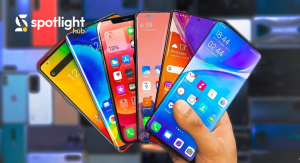Influencer marketing has quickly become one of the most effective ways for brands to connect with their audience. In just a few short years, it has transformed from a niche marketing tactic into a mainstream strategy, with businesses of all sizes relying on influencers to promote their products and services. As we move into 2025, influencer marketing is set to evolve even further. But what trends should marketers watch for in the coming years? In this blog, we’ll explore the key trends in influencer marketing for 2025 and how brands can leverage them for success.
Emerging Trends in Influencer Marketing
1. The Rise of Micro and Nano Influencers
While big-name influencers with millions of followers have dominated the scene, brands are increasingly turning to micro and nano influencers. These influencers have smaller, yet highly engaged audiences, often in specific niches. The appeal of micro and nano influencers lies in their authenticity and the closer relationship they have with their followers.
- Micro influencers typically have between 10,000 and 100,000 followers.
- Nano influencers have fewer than 10,000 followers but often boast incredibly loyal and engaged communities.
- Because these influencers tend to have a more personal connection with their audience, their recommendations feel more genuine, which can lead to higher conversion rates.
In 2025, brands will continue to shift their focus from celebrity endorsements to smaller influencers who can drive more meaningful engagement and stronger customer relationships.
2. Video Content and Live Streaming
As social media platforms evolve, so does the way we consume content. Video content, especially short-form videos and live streams, has become one of the most powerful tools in influencer marketing. Platforms like TikTok, Instagram Reels, and YouTube Shorts are leading the way in encouraging influencers to create engaging video content.
- Video allows influencers to showcase products in use, giving followers a more authentic view.
- Live streaming gives influencers a chance to interact with their audience in real-time, answering questions, offering product demos, and creating a deeper connection with their community.
By 2025, video content will continue to dominate, and influencers will increasingly rely on these formats to create engaging, interactive experiences for their followers.
3. Influencer-Brand Long-Term Partnerships
Gone are the days of one-off influencer collaborations. In 2025, long-term influencer partnerships will be a major trend. Brands are recognizing the value in building sustained relationships with influencers, rather than just relying on short, one-time campaigns.
- Long-term partnerships allow influencers to become authentic brand ambassadors, which enhances credibility and trust with their audience.
- These partnerships also provide brands with consistent exposure and ongoing promotion from the influencer, which leads to better long-term results.
For example, Nike and LeBron James have had a long-standing partnership, and similar partnerships are being forged between brands and influencers in different industries.
4. Increased Focus on Authenticity and Transparency
In today’s world, consumers are becoming increasingly skeptical of traditional advertising. As a result, influencers must prioritize authenticity and transparency in their posts. Followers want to know that influencers genuinely believe in the products they promote and that they’re not just doing it for the paycheck.
- Influencers who openly disclose partnerships and sponsorships are seen as more trustworthy.
- Brands and influencers are shifting away from overly polished, scripted content in favor of raw, behind-the-scenes footage and real-life testimonials.
In 2025, the emphasis on authenticity will continue to rise, with brands choosing influencers who have built strong, authentic relationships with their followers.
5. Influencer Marketing on New Platforms
While Instagram, YouTube, and TikTok have been the go-to platforms for influencer marketing, new social media platforms are starting to gain traction, and brands are beginning to experiment with these emerging platforms.
- Clubhouse, a voice-based social platform, has seen an increase in influencer marketing opportunities, where influencers host conversations and brand events in real-time.
- Platforms like Pinterest are also gaining popularity for influencer collaborations, particularly with lifestyle and home-focused content.
As new platforms continue to emerge, influencer marketing strategies will need to be flexible, adapting to where audiences are spending their time.
The Impact of Influencer Marketing on Consumer Behavior
1. Building Trust and Credibility
Influencers are trusted sources of information for their followers. By promoting a brand or product, influencers provide a level of social proof that can encourage their audience to make purchasing decisions. In fact, 78% of people say that user-generated content from influencers makes them trust the brand more.
- When an influencer shares a product review or a personal experience, it resonates with followers because it feels like a recommendation from a friend rather than a traditional advertisement.
This trust is what makes influencer marketing so effective, and in 2025, brands will continue to leverage this relationship to drive consumer decisions.
2. Creating Social Proof
Influencers help generate social proof for brands. When a respected influencer shares their experience with a product, their followers often believe that the product is worth trying, simply because someone they trust has endorsed it.
- Social proof helps reduce hesitation and encourages impulse buying, especially if the influencer’s audience aligns with the brand’s target demographic.
- This phenomenon is particularly important for products in the beauty, fashion, and tech industries, where word-of-mouth recommendations play a significant role in purchasing decisions.
How to Leverage Influencer Marketing in 2025
1. Identify the Right Influencers
Choosing the right influencer is crucial. Brands must move away from just looking at follower count and focus more on the influencer’s engagement rate, the quality of their content, and how well their audience aligns with the brand’s target market.
- Look for influencers whose values align with your brand’s mission and who have a genuine connection with their audience.
2. Create Authentic and Collaborative Campaigns
Rather than dictating what influencers should say, brands should focus on creating campaigns that allow influencers to bring their unique voice and creativity to the table. This ensures the content feels natural and authentic.
- Allow influencers to integrate the product in a way that feels true to their style and voice, whether that’s through tutorials, challenges, or behind-the-scenes content.
3. Measure the Impact
Finally, brands need to measure the success of their influencer marketing campaigns. Tools that track engagement, conversions, and ROI will be crucial in determining how well a campaign performs. Data-driven insights will help refine future influencer marketing strategies and ensure brands get the most out of their partnerships.
Conclusion
Influencer marketing in 2025 will be all about building lasting, authentic relationships between brands and influencers. With a focus on micro and nano influencers, video content, and long-term collaborations, brands will continue to see the power of influencers in driving engagement and trust. As the landscape evolves, staying on top of these trends will be crucial for marketers who want to make the most of influencer marketing and connect with their audiences in meaningful ways.










